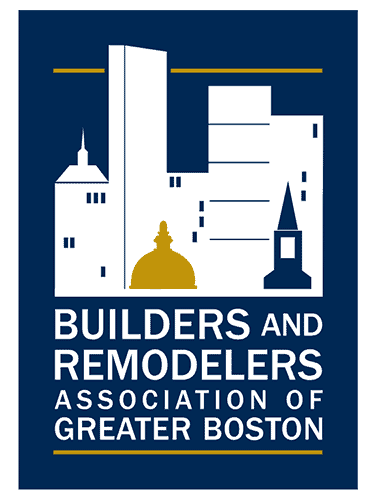Are you ready to embark on a cabinet painting project? One of the crucial decisions you’ll make is selecting the right painting cabinet brush. The brush you choose can significantly impact the quality of your finish and the overall success of your project. Let’s dive into the ultimate guide to help you confidently navigate the world of painting cabinet brushes.
Understanding Different Types of Painting Cabinet Brushes
When it comes to painting cabinet brushes, the options can seem overwhelming. However, understanding the characteristics of each type can help you make an informed decision based on your project needs.
| Brush Type | Description | When to Use |
|---|---|---|
| Natural Bristle Brushes | Made from animal hair like hog or ox hair. Great for oil-based paints, providing a textured finish. Ideal for larger flat surfaces like cabinets. | – When using oil-based paints or stains. – For achieving a traditional, textured finish. – When working on larger, flat cabinet surfaces. |
| Synthetic Bristle Brushes | Made from nylon or polyester fibers. Durable, flexible, and easy to clean. Suitable for oil-based and water-based paints, offering a smooth application. | – When using either oil-based or water-based paints. – For achieving a smooth and even finish. – When working on cabinets with intricate details. |
| Foam Brushes | Foam Brushes are made with foam pads attached to a handle. Excellent for smooth surfaces with minimal brush strokes. Lightweight and disposable, suitable for clear finishes. | – For applying clear finishes or sealers. – When working on smooth cabinet surfaces. – For small touch-up projects or detailed work. |
| Angled Brushes | Bristles cut at an angle for precise application in tight spaces. Versatile for edges, corners, trim, and moldings. Available in various sizes for different tasks. | – For painting edges, corners, and trim. – When precision and control are needed. – When working on cabinets with intricate details. |
Factors to Consider When Choosing a Painting Cabinet Brush
Quality
Quality should always be a top priority when choosing a painting cabinet brush. High-quality brushes may initially come with a higher price tag, but they offer several advantages that make them worth the investment. These advantages include the following:
- Durability: High-quality brushes are built to last, with sturdy construction that can withstand frequent use and cleaning.
- Consistency: Quality brushes provide consistent performance, ensuring even application of paint and a smooth finish.
- Precision: They offer better control and precision, allowing you to achieve professional results with minimal effort.
- Longevity: A durable brush will last through multiple painting projects, saving you money in the long run by avoiding frequent replacements.
Size and Shape
The size and shape of the brush play a crucial role in its suitability for different types of cabinet painting tasks. Consider the following factors when evaluating size and shape:
- Detail Work: Smaller brushes are ideal for intricate details, edges, and corners. They allow for precise paint application in tight spaces and delicate areas.
- Coverage: Larger brushes cover larger areas more efficiently, making them suitable for broad surfaces such as cabinet doors or panels. They can speed up the painting process while maintaining quality.
Bristle Material
The material of the bristles is another critical factor to consider, as it determines the compatibility of the brush with different types of paints. Here’s a breakdown of bristle materials and their suitability:
- Natural Bristles: Ideal for oil-based paints, natural bristle brushes offer excellent paint absorption and release. They are best suited for achieving a traditional, textured finish.
- Synthetic Bristles: Compatible with oil- and water-based paints, synthetic bristle brushes are versatile and easy to clean. They provide a smooth and even paint application, making them suitable for various cabinet painting projects.
Handle Grip
A comfortable handle grip is essential for extended painting sessions, especially when tackling larger cabinet painting projects. A relaxed and ergonomic handle:
- Reduces Fatigue: A well-designed handle reduces hand and wrist fatigue, allowing you to paint for extended periods without discomfort.
- Steady Grip: It provides a steady grip, ensuring control and precision during painting.
- Non-Slip: A non-slip handle is handy when working with paint or in humid conditions, preventing accidents and ensuring safety.
By considering these factors—quality, size and shape, bristle material, and handle grip—, you can choose the perfect painting cabinet brush to meet your project requirements and deliver professional results.
Tips for Testing and Selecting the Right Brush
Before buying a painting cabinet brush, visit a local paint store to assess options firsthand. Seek recommendations aligned with your project needs. Testing the brush’s bristles, flexibility, and overall feel provides valuable performance insights. Experiment with various brushes on a small project to gauge handling and finish quality. This hands-on approach ensures you select the most suitable brush for achieving professional results in your cabinet painting project.
Maintaining and Caring for Your Painting Cabinet Brush
Proper maintenance is essential for extending the lifespan of your painting cabinet brush. Follow these steps to ensure your brushes stay in optimal condition:
- Cleaning After Each Use: Immediately after painting, clean your brushes thoroughly using the appropriate cleaning solution for the type of paint you use. For oil-based paints, use mineral spirits or paint thinner. For water-based paints, use soap and water. Gently work the cleaning solution into the bristles to remove paint residue.
- Rinsing and Shaping: Rinse the brushes under running water to remove any remaining paint and cleaning solution. Use your fingers to reshape the bristles, ensuring they return to their original form. Avoid squeezing or twisting the bristles, as this can damage them.
- Drying Properly: After rinsing, pat the brushes dry with a clean cloth or paper towel. Avoid using excessive force, as this can misshape the bristles. Allow the brushes to air dry completely before storing them.
- Storage: Store your clean and dry brushes upright or hanging to maintain their shape and prevent bristles from bending or fraying. Avoid storing brushes with the bristles facing downward, as this can cause them to bend or splay over time.
Regularly cleaning and correctly storing your painting cabinet brushes will prolong their lifespan and ensure optimal performance for future painting projects.
Ensuring Longevity and Quality in Your Cabinet Painting Brush Selection
Choosing the right painting cabinet brush is crucial in achieving professional-quality results for your cabinet painting project. By considering factors like brush type, size, bristle material, and handle comfort, you can make an informed decision that enhances your painting experience.
If you’re looking to transform your home cost-effectively, our expert cabinet painters at Ulta Home are here for you! From prep to finishing, we will deliver the best cabinet painting services your home deserves. We are equipped with the best tools, methods, and materials to ensure beautiful, durable, and long-lasting cabinets for you to enjoy. Ready to get started? Call us now at 978-481-4119.










